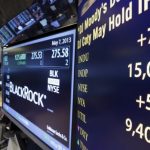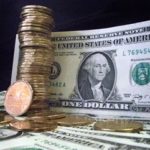Australian dollar traded little changed against its US counterpart on Friday and was set for the longest streak of weekly losses since 1985, after Reserve Bank of Australia (RBA) Governor Glenn Stevens indicated that a weaker national currency was preferable over lower interest rates in order to facilitate the accelerated revival of Australias economy.
AUD/USD fell to a session low at 0.8914 during the early phase of Asian trade, also the pairs lowest point since August 30th, after which consolidation followed at 0.8936, dipping 0.02% for the day. Support was likely to be found at August 30th low, 0.8892, while resistance was to be encountered at December 12th high, 0.9082.
The Aussie declined to lows unseen in more than three months against the US dollar earlier in the day, following comments made by RBA Governor Glenn Stevens. “I dont think the extent of our knowledge about whats correct is that good, but I did think 95 was rather too high. I thought 85 would be closer to the mark than 95 at the time we started to make some comments some months ago, but, really, I dont think we can be that precise”, Stevens said in an interview published in the Australian Financial Review on Friday.
Australian dollar has depreciated 1.9% over the last five days, marking an eighth-straight week of losses, or the longest streak since March 1985.
“The RBA appears to have made a strategic decision in mid-October that they could get the Aussie down and they should try and get it lower as they downgraded their view of the resource sector,” said Greg Gibbs, a Singapore-based strategist at Royal Bank of Scotland Group Plc., cited by Bloomberg. “They have sent a message and the currency has reacted. The real risk by saying 85 cents is that the market feels more comfortable with the currency around current levels.”
These comments came one day after the Australian statistics bureau reported that the rate of unemployment in the country rose to 5.8% in November in consonance with expectations and matching the highest level since 2009. In October the rate was 5.7%.
At the same time, Australian economy managed to add 21 000 new job positions in November, which outstripped the projected 10 000 new jobs, after in October 700 jobs have been lost.
The yield on Australian three-year government bonds dropped two basis points, or 0.02 percentage point, to reach 2.98%, while marking a retreat by 15 basis points on a weekly basis, which appears to be the most considerable weekly decline since July. The yield on nations ten-year bonds was little changed at 4.32%.
Meanwhile, the Department of Labor in the United States released its weekly report on Thursday, which stated that the number of people, who filed for unemployment assistance in the country increased to the highest level in two months, reaching 368 000 during the week ending on December 7th. Analysts had projected that the number of initial jobless claims will fall to 320 000 the same week, compared to preceding week’s upwardly revised 300 000 claims from initially estimated 298 000.
A separate report, by the Commerce Department, showed an increase by 0.7% in nations retail sales in November, higher than analysts’ forecasts of a 0.6% gain. Retail sales less autos, or core retail sales, rose 0.4% compared to forecasts of a 0.2% increase. In September core retail sales rose by an upwardly revised 0.5% from a 0.2% gain previously.
Market focus now turned to Federal Reserves meeting on policy, scheduled to be conducted on December 17th-18th. According to 34% of economists, participated in a Bloomberg survey on December 6th, the central bank may begin to pare back its 85-billion-USD monthly asset purchases at this meeting, rather than wait until January or March.
Elsewhere, the Aussie was lower against the euro, with EUR/AUD cross up 0.10% on a daily basis to trade at 1.5410 at 8:11 GMT. AUD/NZD pair was up a mere 0.03% to trade at 1.0841 at 8:13 GMT.





